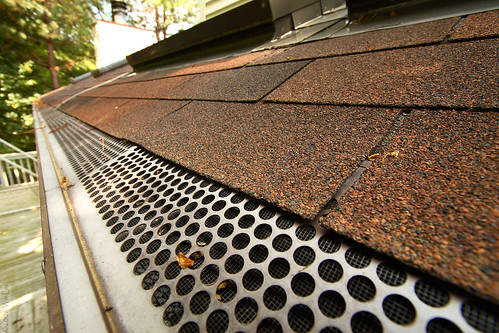 Gutters are essential for keeping water from pooling around your exterior walls and foundation, but effective gutters are also an important part of maintaining the roof of your home. Gutters are susceptible to damage from weather or time, but poor installation and inappropriate building materials are also culprits in the case of bad gutters. Ignoring problems with bad gutters can lead to serious and costing roof damage. Does this Spark an idea?
Gutters are essential for keeping water from pooling around your exterior walls and foundation, but effective gutters are also an important part of maintaining the roof of your home. Gutters are susceptible to damage from weather or time, but poor installation and inappropriate building materials are also culprits in the case of bad gutters. Ignoring problems with bad gutters can lead to serious and costing roof damage. Does this Spark an idea?
Choosing Gutters
Choosing the most durable and cost-effective gutters for your home can save you a lot of trouble down the road. Aluminum gutters are one of the most common materials for gutters because they are resistant to corrosion and comparatively inexpensive. Steel gutters are also a durable material, and they are less likely to expand and contract with fluctuating temperatures, but they are more expensive to install. A durable material is less likely to crack and bend, both of which are common causes of gutter-caused roof damage. Other considerations in choosing gutters include limited seams, simple profiles and gutter screens to keep out debris.
Downspouts
Downspouts are responsible for carrying rainwater and small pieces of debris away from the roof gutter. Downspouts typically feature a joint at the end of the spout so that water doesn't pool around the foundation and cause leaks. If debris collects at the joint and causes a clog, water will collect in the gutter that runs across the roof line. Pooling water along the roof line rots the wood and leaves your roof vulnerable to leaks and damage. If your house is particularly long, you may need more than one downspout to manage heavy rains and prevent backup along the roof gutter.
Debris
Clogged gutters are the most common cause of malfunctioning gutters. Open-top gutters are collection zones for leaves, sticks and acorns. In some cases, gutters serve as nesting spaces for birds and squirrels. When a gutter is blocked, water spills over the edge of the gutter. The collecting water soaks and rots the materials of your roof. If still water remains in a debris-filled gutter after the rainfall, moss and mold will possibly grow inside your gutters and along your roof.
Installation Problems
Even gutters that are properly installed may cause roof problems down the road. One consideration during installation is the pitch or angle of both the roof and the gutter. To accommodate the specific angle of your roof, the gutter must be hung at a pitch so that water will collect inside the gutter rather than flow in front of or behind the gutter. Over time, gutters may loosen from their joints and disrupt the pitch, causing water to flow behind the gutter and along the roof line instead. Even well-attached gutters can be ripped from the roof during high winds or heavy snow. The force of the gutter pulling from the roof may also cause acute damage to roof wood or shingles.


